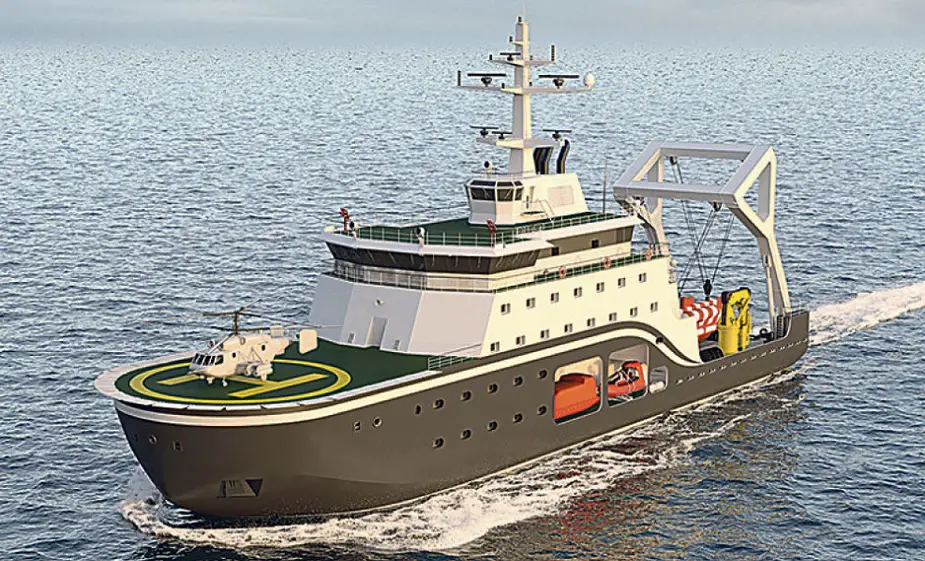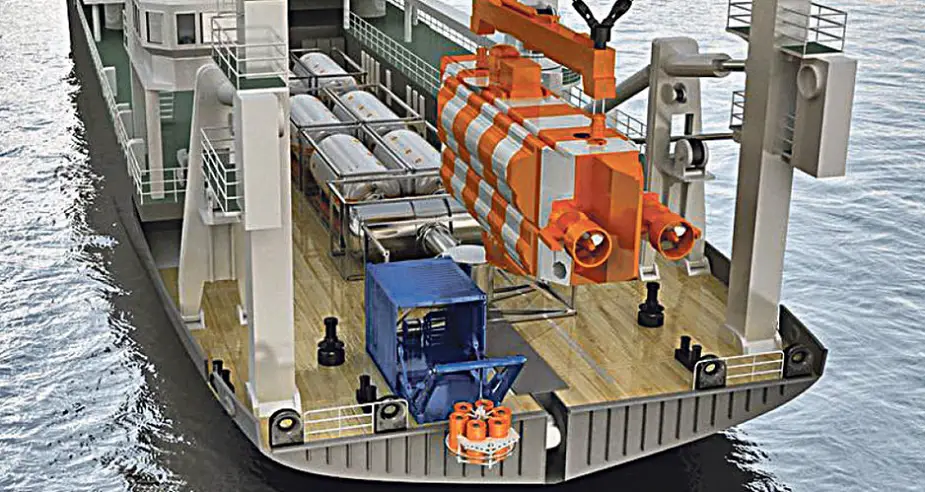Breaking news
Russia to Design Luchina-class Submarine Rescue System.
The department for state defense order will consider applications for the R&D tender to design Luchina-class modular rescue system for distressed submarines on the seabed. The design is to end a protracted crisis in Russian Navy rescue means, the Military-Industrial Courier writes.
 Artist impression of Project 02981 rescue vessel, proposed by JSC "Leningrad Shipyard" Pella. Picture: Pella shipyard
Artist impression of Project 02981 rescue vessel, proposed by JSC "Leningrad Shipyard" Pella. Picture: Pella shipyard
Navy and industry representatives held a roundtable at Army-2018 forum to discuss rescue means and specialized underwater vehicles. Despite major investments, the possibility of the massive decompression for a big number of rescued from a wrecked submarine has not been ensured. The Northern, Baltic and Black Sea fleets do not have such means at all while the capabilities of the Pacific fleet available on the latest Igor Belousov rescue ship are insufficient to save the crews of nuclear submarines.
The question is where did the money allocated after the tragedy with the Kursk submarine go? It was mostly spent to buy foreign TV-guided underwater craft and build the Igor Belousov. Tetis-Pro Company said only 27 of the supplied 155 underwater craft were made in Russia.
The Igor Belousov rescue vessel and its deep-water diving set GVK-450 were surrounded by numerous scandals. The diving set actually replaced on the small vessel the real decompression chambers for rescued submariners. The remaining ones are sufficient for sixty men. It means the latest rescue boat is incapable of massive decompression of the crew of any nuclear submarine and it is the key error of the project.
The designers knew they were listing rescued humans as planned losses. Some of the submariners will either die or become invalids without timely decompression. The claim that most of the crew will anyway die on a wrecked submarine is both blasphemous and wrong. The experience of previous accidents and the construction of latest-generation submarines confirm it.
 Cascade decompression chamber system MSOPSE PL / МСОПСЭ ПЛ . Picture via vpk-news.ru
Cascade decompression chamber system MSOPSE PL / МСОПСЭ ПЛ . Picture via vpk-news.ru
Something strange is happening with decompression chambers. The situation deteriorates with every new rescue vessel. The Soviet-built Alagez rescue ship had decompression chambers for a hundred men while the Igor Belousov has a sixty-men capacity and the prospective rescue vessel of project 02981 has decompression chambers for 40 men.
It means over two thirds of the crew of a nuclear submarine are listed as planned losses on the prospective rescue boat. Its capacity is insufficient even for a diesel submarine.
There is no doubt the defense industry can quickly build project 02981 vessels, but does the Navy need them? Rescue vessels are definitely necessary but with other capabilities. There was a tough discussion at the roundtable. One party said GVK-300 deep-water diving complex leaves no place for additional decompression chambers. The question is why GVK is necessary at all, if unmanned underwater craft and baric underwater suits can fully replace it? Experts have numerously raised the issue. Who and why is advocating massive supplies of GVK which the Navy does not need? They are lobbying the delivery of carrier ships for costly and needless GVK instead of the necessary rescue vessels.
Are there any solutions? One was voiced in 2017 at the Navy salon to produce modular rescue gear for submariners which is a cascade of decompression chambers to be operated even by unspecialized vessels (a system called МСОПСЭ ПЛ pictured above). The basic set is for 60 men and the capacity can be increased to 120 in case of extreme overload. It is likely the right approach as the modular scheme can increase decompression capabilities according to real conditions and the class of the wrecked submarine.
It is clear a cascade of modular chambers shall be carried by project 02981 rescue vessels to ensure massive decompression for at least 60 men at the Baltic and Black Sea fleets and at least 140 men at the Northern and Pacific fleets. The unmanned underwater craft are very costly, their operations are restricted in stormy seas and rescue productivity is insufficient. As project 02981 rescue vessel displacement is limited and has a dynamic positioning system, it would be appropriate to use a tethered self-propelled guided bell as the main rescue means (a hybrid of a heavy underwater craft and a rescue bell).
There is no doubt the equipment can be created in reasonable time and cost. It will help create a viable rescue system for all the fleets (six vessels) in conditions of limited financing. The rescue vessels have to keep the possibility to carry unmanned underwater craft, the Military-Industrial Courier writes.
© Copyright 2018 TASS. All rights reserved. This material may not be published, broadcast, rewritten or redistributed.


























